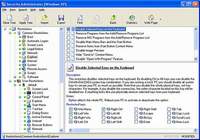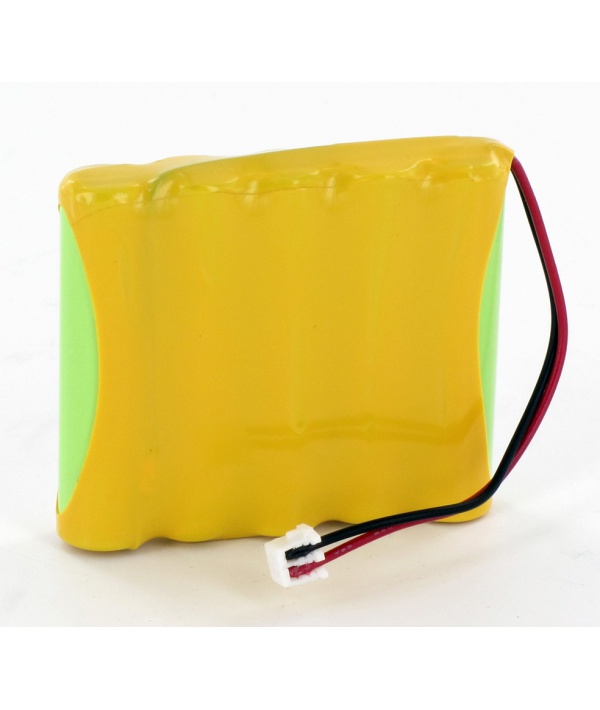Modem Spy Pro
Modem Spy is a shareware software app filed under modem and telephony software and made available by SoftCab for Windows.
Modem Spy Program
- Or you can just use it to spy. For instance, a similar system made by MIT called Wi-Vi “enables seeing through walls using Wi-Fi signals. It allows us to track moving humans through walls.
- Wishing to provide outsanding service to our customers, we have consolidated in the SUPPORT section all the documentation and the tools to help you. You'll find user manuals, activation procedures, software updates, catalog, FAQs and contact information to reach us.
- Modem Spy is a product developed by Softcab Inc.This site is not directly affiliated with Softcab Inc.All trademarks, registered trademarks, product names and company names or logos mentioned herein are the property of their respective owners.
The review for Modem Spy has not been completed yet, but it was tested by an editor here on a PC and a list of features has been compiled; see below.
If you would like to submit a review of this software download, we welcome your input and encourage you to submit us something!
Browning Strike Force HD Pro X #4. Browning Dark Ops HD Pro X #5. Bushnell Core DS No Glow #6. Bushnell Core DS Low Glow #7. Browning Dark Ops Pro XD #8. Spypoint Force Dark #9. Spypoint Solar-Dark #10. Reconyx Hyperfire 2; Top Rated Cellular Cameras 2020 #1 Browning Defender Wireless Pro Scout (AT&T) - Browning Defender Wireless Pro. Modem spy Pro is very useful utility for phone call recording. Features: 1) record phone conversations. 2) microphone recorder. 3) WAVe files playback via telephone line. 4) Sound card playback of recorded mesages. 5) Record ALL incomming phone calls. 6) Has built-in software automatic gain control (AGC). 7) Detect and log Caller ID information.
Modem spy is handy utility for phone calls recording.
Modem spy is handy utility for phone calls recording.
Features and highlights

- Record phone conversations.
- Record from microphone.
- Playback recorded mesages via phone line.
- Playback recorded mesages via sound card.
- Can record ALL incoming phone calls.
- Has built-in software automatic gain control.
- Detects and logs Caller ID.
- Pops up caller ID information.
- Super Spy mode will hide Modem Spy behaviour. Nobody will know that you are recording phone calls.


This download is licensed as shareware for the Windows operating system from modem and telephony software and can be used as a free trial until the trial period ends (after an unspecified number of days). The Modem Spy 4.0.9882 demo is available to all software users as a free download with potential restrictions and is not necessarily the full version of this software.
Compatibility with this software may vary, but will generally run fine under Microsoft Windows 10, Windows 8, Windows 8.1, Windows 7, Windows Vista and Windows XP on either a 32-bit or 64-bit setup. A separate x64 version may be available from Modemspy.
Filed under:- Modem Spy Download
- Major release: Modem Spy 4.0
City dwellers spend nearly every moment of every day awash in Wi-Fi signals. Homes, streets, businesses, and office buildings are constantly blasting wireless signals every which way for the benefit of nearby phones, tablets, laptops, wearables, and other connected paraphernalia.
When those devices connect to a router, they send requests for information—a weather forecast, the latest sports scores, a news article—and, in turn, receive that data, all over the air. As it communicates with the devices, the router is also gathering information about how its signals are traveling through the air, and whether they’re being disrupted by obstacles or interference. With that data, the router can make small adjustments to communicate more reliably with the devices it’s connected to.
But it can also be used to monitor humans—and in surprisingly detailed ways.
As people move through a space with a Wi-Fi signal, their bodies affect it, absorbing some waves and reflecting others in various directions. By analyzing the exact ways that a Wi-Fi signal is altered when a human moves through it, researchers can “see” what someone writes with their finger in the air, identify a particular person by the way that they walk, and even read a person’s lips with startling accuracy—in some cases even if a router isn’t in the same room as the person performing the actions.
Recommended Reading
Recommended Reading
Several recent experiments have focused on using Wi-Fi signals to identify people, either based on their body shape or the specific way they tend to move. Earlier this month, a group of computer-science researchers at Northwestern Polytechnical University in China posted a paper to an online archive of scientific research, detailing a system that can accurately identify humans as they walk through a door nine times out of ten.
The system must first be trained: It has to learn individuals’ body shapes so that it can identify them later. After memorizing body shapes, the system, which the researchers named FreeSense, watches for people walking across its line of sight. If it’s told that the next passerby will be one of two people, the system can correctly identify which it is 95 percent of the time. If it’s choosing between six people, it identifies the right one 89 percent of the time.
The researchers proposed using their technology in a smart-home setting: If the router senses one person’s entry into a room, it could communicate with other connected devices—lights, appliances, window shades—to customize the room to that person’s preferences.
FreeSense mirrored another Wi-Fi-based identification system that a group of researchers from Australia and the UK presented at a conference earlier this year. Their system, Wi-Fi ID, focused on gait as a way to identify people from among a small group. It achieved 93 percent accuracy when choosing among two people, and 77 percent when choosing from among six. Eventually, the researchers wrote, the system could become accurate enough that it could sound an alarm if an unrecognized intruder entered.
Something in the way? No problem. A pair of MIT researchers wrote in 2013 that they could use a router to detect the number of humans in a room and identify some basic arm gestures, even through a wall. They could tell how many people were in a room from behind a solid wooden door, a 6-inch hollow wall supported by steel beams, or an 8-inch concrete wall—and detect messages drawn in the air from a distance of five meters (but still in another room) with 100 percent accuracy.

(Using more precise sensors, the same MIT researchers went on to develop systems that can distinguish between different people standing behind walls, and remotely monitor breathing and heart rates with 99 percent accuracy. President Obama got a glimpse of the latter technology during last year’s White House Demo Day in the form of Emerald, a device geared towards elderly people that can detect physical activity and falls throughout an entire home. The device even tries to predict falls before they happen by monitoring a person’s movement patterns.)
Beyond human identification and general gesture recognition, Wi-Fi signals can be used to discern even the slightest of movements with extreme precision.
A system called “WiKey” presented at a conference last year could tell what keys a user was pressing on a keyboard by monitoring minute finger movements. Once trained, WiKey could recognize a sentence as it was typed with 93.5 percent accuracy—all using nothing but a commercially available router and some custom code created by the researchers.
And a group of researchers led by a Berkeley Ph.D. student presented technology at a 2014 conference that could “hear” what people were saying by analyzing the distortions and reflections in Wi-Fi signals created by their moving mouths. The system could determine which words from a list of lip-readable vocabulary were being said with 91 percent accuracy when one person was speaking, and 74 percent accuracy when three people were speaking at the same time.
Many researchers presented their Wi-Fi sensing technology as a way to preserve privacy while still capturing important data. Instead of using cameras to monitor a space—recording and preserving everything that happens in detail—a router-based system could detect movements or actions without intruding too much, they said.
I asked the lead researcher behind WiKey, Kamran Ali, whether his technology could be used to secretly steal sensitive data. Ali said the system only works in controlled environments, and with rigorous training. “So, it is not a big privacy concern for now, no worries there,” wrote Ali, a Ph.D. student at Michigan State University, in an email.
But as Wi-Fi “vision” evolves, it may become more adaptable and need less training. And if a hacker is able to gain access to a router and install a WiKey-like software package—or trick a user into connecting to a malicious router—he or she can try to eavesdrop on what’s being typed nearby without the user ever knowing.
Modem Spy Pro 4.1 Crack
Since all of these ideas piggyback on one of the most ubiquitous wireless signals, they’re ripe for wide distribution once they’re refined, without the need for any new or expensive equipment. Routers could soon keep kids and older adults safe, log daily activities, or make a smart home run more smoothly—but, if invaded by a malicious hacker, they could also be turned into incredibly sophisticated hubs for monitoring and surveillance.